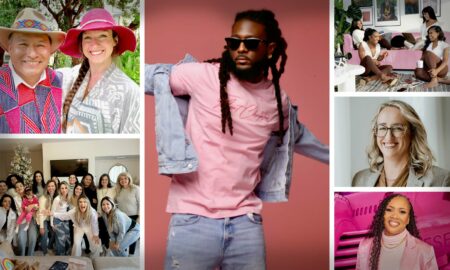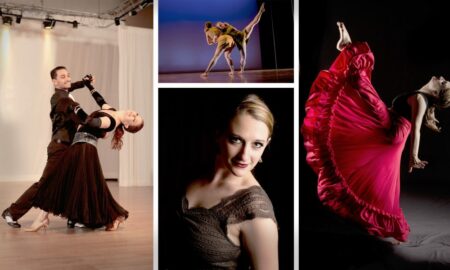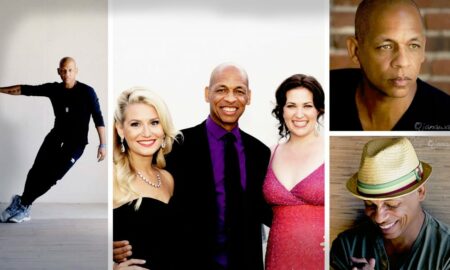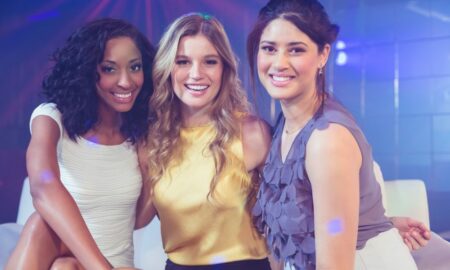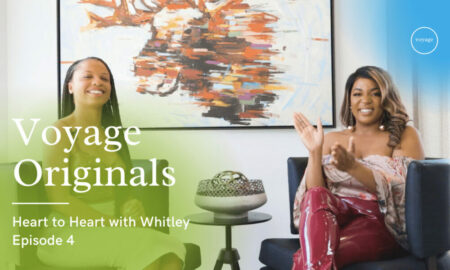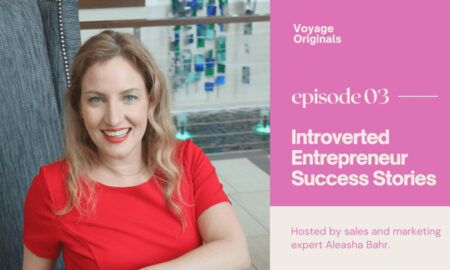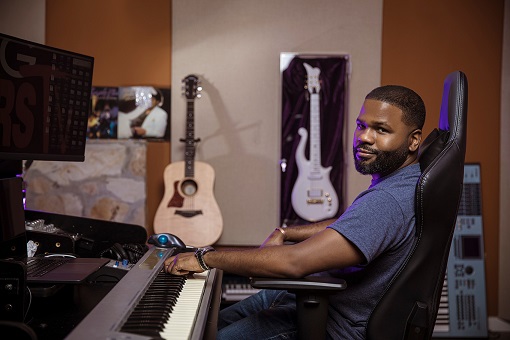

Today we’d like to introduce you to Chris Henderson.
Hi Chris, please kick things off for us with an introduction to yourself and your story.
I grew up in the Detroit area. My first creative talent was drawing, then creative writing whenever school assignments called for an original story or poem. I didn’t know I had musical talent at first but after I saw the movie “Purple Rain” as a kid, something was activated inside of me. There was a scene where Prince played a few seconds of an instrumental tape from the girls in his band, he rewound it and played it again for a few more seconds, then he sat down at the piano and started playing the whole song… I was amazed! My older brother sat next to me in the theater and told me that was called “playing by ear” and that some people can just ‘do it.’ Since that day, any time I was near a piano in school or at a neighbor’s house, I tried playing popular songs from the radio on the piano and discovered that I too could just ‘do it.’ I could hunt down the notes and the chords that sounded right to my ears and replicate what I heard on the radio after some practice. The summer prior to that one, I was heavy into Michael Jackson. I spent that summer entering Michael Jackson lookalike/dance alike contests where I ended up sweeping them, winning every time, collecting prize money and then being invited to play paying gigs at parties, events and bar mitzvahs as a result. By the end of that summer, I’d stacked $1,200. I held on to that money for a year but once Purple Rain changed my life, I took that MJ money and spent it on my first keyboard.
My songwriting was just a private and almost secret hobby of mine. It wasn’t until I went to college at Hampton University that I had access to the studio on campus and started recording original songs. I didn’t love my singing voice so I usually found other singers on campus to sing my ideas. My reputation grew, I had gotten the attention of Teddy Riley who was in Virginia Beach at that time and opportunities started opening up. While still in school, a few songs made it to market that I wasn’t credited for but it still encouraged me and gave me the confidence to know that I was self-contained as a songwriter/producer and capable of hit records.
“Happily Ever After” by Case was the first record I placed that I was fully credited for. I didn’t intend on it being a record or even heard as a demo. I wrote and produced it for some childhood friends of mine who were getting married, it was only meant to be their wedding song, my gift to them. A friend of mine convinced me to include it in a demo package that I had sent to Def Jam A&Rs. It became one of Case’s biggest records and is still considered a classic wedding song.
I moved to this area of Atlanta in late 2005 and build this basement studio in my first month here. Instead of mimicking a dark club vibe like most of the studios I’ve seen here, I built this room more like a writer’s room full of books, concert tour books, records, instruments and things that visually stimulate and inspire you to create and experiment. I created the Grammy-winning “Blame It” in this room. It’s hosted acts Trey Songz, Ray J, and even Vedo, Lucky Daye and Nicki Minaj very early in their careers.
Today I’m still creating records and doing what I love. I look forward to collecting two more ASCAP Awards this June for “You Got It” by Vedo being one of the top R&B songs of last year. I mentor regularly, conduct songwriter and producer workshops internationally to educate and motivate this new generation of creatives. I have an online content platform, Song Builders TV where I teach songwriting and music production through demonstration and storytelling. Also, I’m a newly elected Governor of the Recording Academy Board, Atlanta Chapter.
We all face challenges, but looking back would you describe it as a relatively smooth road?
I didn’t have a manager through most of my career, so I had to become very self-sufficient very fast in deciphering my contracts, learning the systems through which we’re paid, learning the networks of how to get a song heard by the right people and even doing follow ups, effectively communicating with labels and publishers to make sure that royalties were flowing properly. Wearing so many hats and not having a buffer or representative to speak for me during tough negotiations made it very hard to fight for fair treatment while not being labeled as ‘difficult to work with.’
For example, a studio session can go great and I can creatively lock in with an artist. Then on the business side either beforehand or afterwards, someone on the artist’s business team is often trying me and pushing the limits of my patience on contract terms, being paid or credited fairly, or some other aspect making good on the agreements made. Weeks, sometimes months after the work is done, I’d be making several phone calls and/or sending well-crafted emails to managers, label executives and attorneys, fixing supposed filing mistakes making sure fees and royalties find their way into the right accounts. I had to do this on my very first record, and surprisingly, even on my latest. I know not everybody can figure that part out and do that for themselves, so I’m thankful that I can. It makes me more knowledgeable in advising new creatives about their rights and terms they should demand in their paperwork.
I had a health scare in late 2015 lasting through 2016, a condition called trigeminal neuralgia. It caused attacks of extreme nerve pain on the left side of my face and neck. The medication for it kept me asleep for most of the day, I could only stay awake for 4 hours at a time. The medication was killing my white bloods cells as a side effect and if I tried to lighten up on the medication then a world of deafening pain awaited. So being up for only 4 hours at a time, I couldn’t travel like I used to and couldn’t do real studio sessions. Most studio sessions were a bare minimum of 4 hours so at this time, I could only be in & out at best.
It was during this time that I started creating content. I would just start song ideas and work on them like I normally would, only this time I was recording everything on my phone. That way no one knew that I would have to stop and fall asleep after working for 3 hours. I’d get up, continue from where I left off until the song was done. Then I’d wake up, watch some youtube posts about editing videos, then edit my content in these little time slots of being awake. I didn’t really have a goal in mind, it was really just to stay busy, wrap my mind around something and give myself a reason to wake up & work. I’d post them on Facebook where they were shared so widely and were so positively received that work inquiries continued to come to my inbox. Because I was talking through my thought process in these song creation sessions, the content also had an unexpected educational aspect to it. This is what eventually lead to me be invited to speak and do workshops at conferences, first in Atlanta and LA but then in 2017 in Paris, Canada and various music schools in the Netherlands.
Luckily in December 2016, I had a breakthrough in my condition. It was accidentally discovered that the condition was being caused by a fracture in one of my back teeth. So having that molar removed cured me of that condition, I was off of that medication and its damaging side effects. Having lost almost two years, by 2017 I was saying ‘Yes’ to everything. This is what brought me to the international workshops overseas and that continued all the way up to the pandemic. I also left that period of time with a new platform and a new skillset. I continued to incorporate the travel and the lessons from the workshop into my content.
Can you tell our readers more about what you do and what you think sets you apart from others?
I came into the business writing love songs so I’ll always be trying to trigger an emotion that will move people, no matter what tempo or genre I’m doing. I also tend to be a vivid storyteller, painting clear pictures of situations and moods in my verses. My tracks and sounds are very intentional and try to match the energy of the word flow perfectly. My best-known songs are the Grammy-winning “Blame It” by Jamie Foxx and T-Pain, “Happily Ever After” by Case and most recently “You Got It’ by Vedo. My favorite songs are some of the much lesser-known though.
What sets me apart from most others is my self-sufficiency, both in my ability to do a complete song top to bottom around an artists’ vision and in my ability to run a successful business. I can also teach others how to do the same.
Who else deserves credit in your story?
My mother and my brother are my first supporters and motivators. When I speak of the ideas I had early on in childhood, none of that is possible without mom’s support and encouragement. She was the one taking me to those contests, making the outfits, allowing me to keep the prize money and spend it however I wanted. Not a lot of parents that I knew at that time would encourage their kids to chase dreams like that. Because of her, I had an early belief that I could create something valuable enough to be paid for it.
After that, every single placement and success from my beginnings through my professional life was created in some way from my oldest friends. The first songs were sung by them (Terry Dexter, Rod Lumpkin, Collette Ebanks, Ronda Blackwell, Danny Rosenbaum, Shawnee Taylor, Kanika Milton). My first placement was written for two friends I’d known since middle school (Tamika Curry, Jason Clinkscale). My first placement happened through an introduction made by another elementary school friend (Dale Godboldo). College friends helped me hone my craft, run a business, and fund the expansion of our studio and equipment (Delante Murphy, Rodney Walker, Jack Manning & Scott Carter). Another elementary school friend (Tiffany Lanier) was key in getting my biggest placement to date, not to mention the industry friend and fellow Detroiter who first played the “Blame It” demo for Jamie Foxx (Carlos McKinney). Even without a proper mentor or a manager, my real friends, most of which aren’t even in the music business are the support system that made any of it possible. Even the dentist who pulled that tooth out (the one that was causing the trigeminal neuralgia) happened to be my brother! That’s why I don’t really fully immerse myself in the ‘music business community.’ I try to be active in my community as a whole and of course stay in touch with the communities that raised me from Detroit to Southfield, MI to Hampton, VA to Atlanta.
Contact Info:
- Email: deepmusicproductions@gmai.com
- Website: https://songbuilderstv.com/
- Instagram: https://www.instagram.com/deepchrish/
- Facebook: https://www.facebook.com/christopher.henderson.3950/
- Twitter: https://twitter.com/DEEPChris
- Youtube: https://www.youtube.com/c/DeepSongBuilders
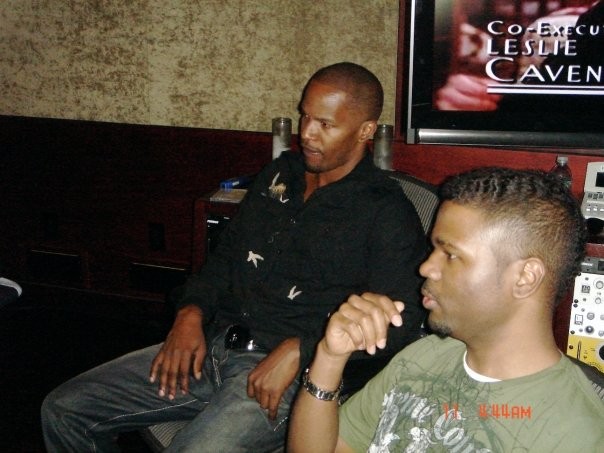
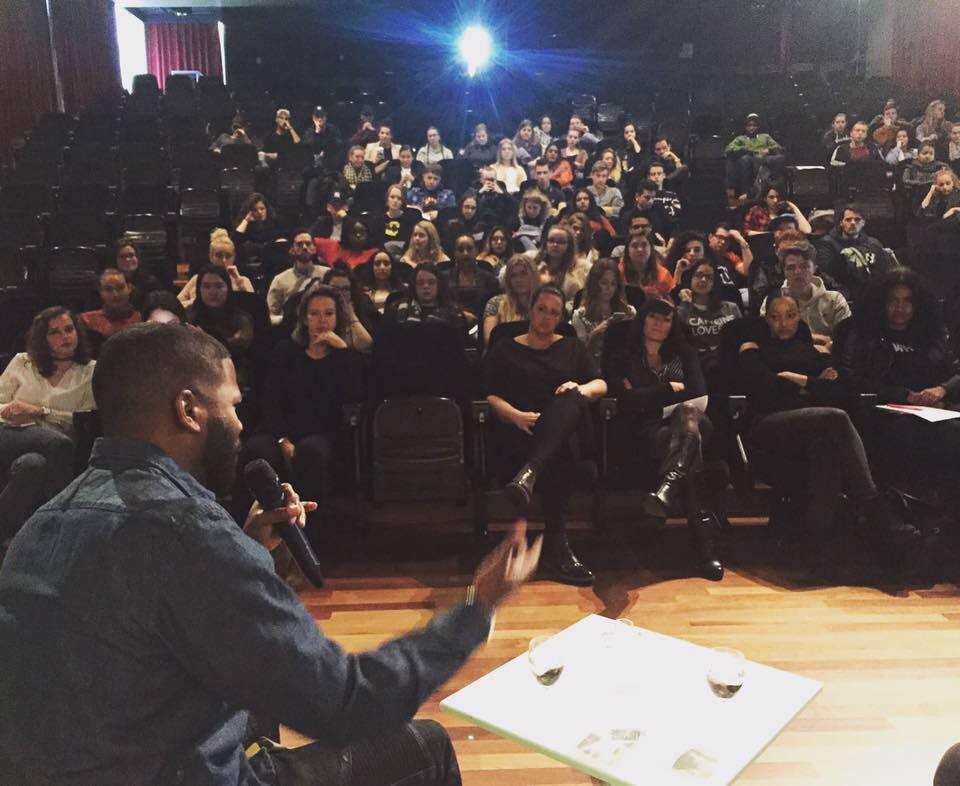
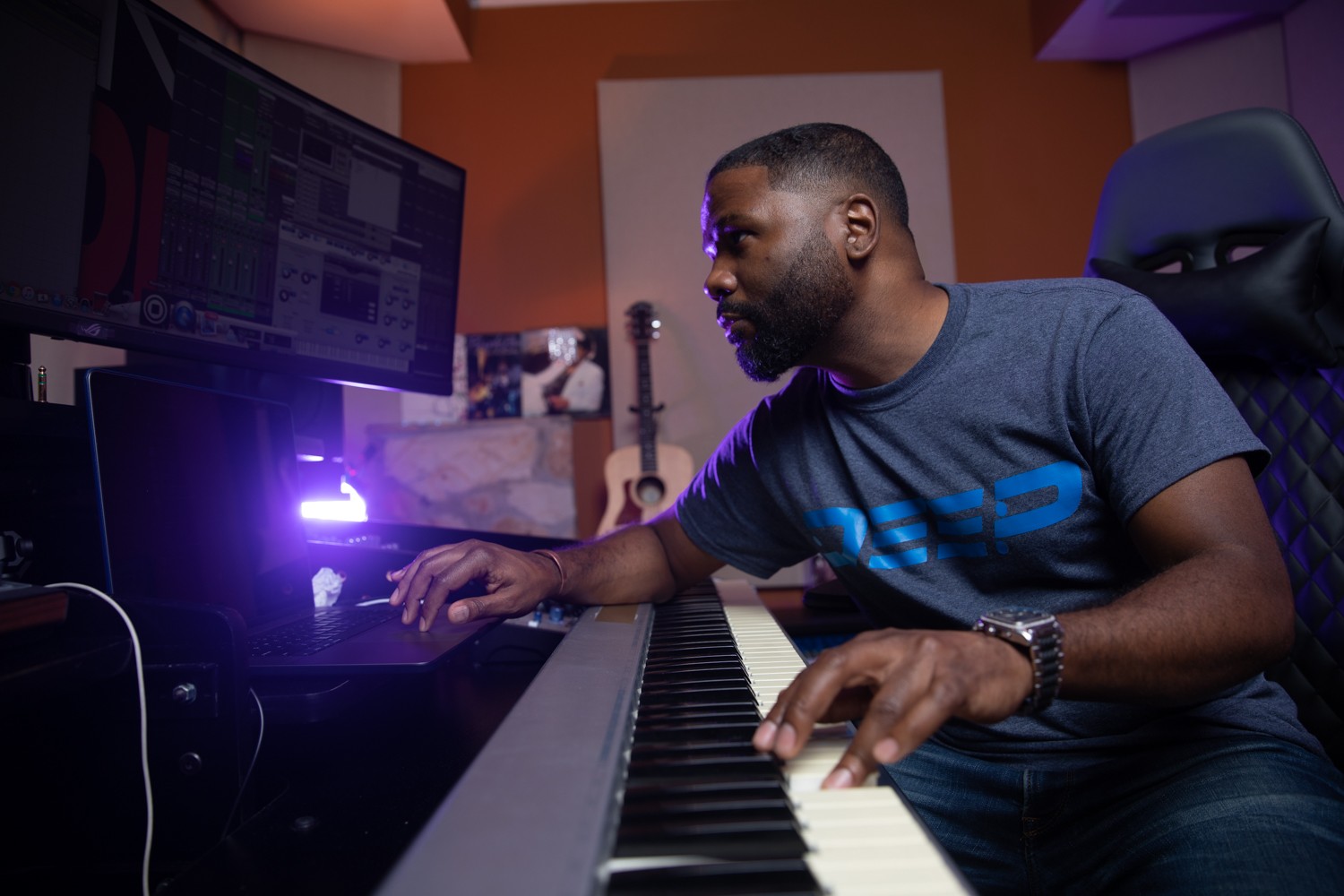
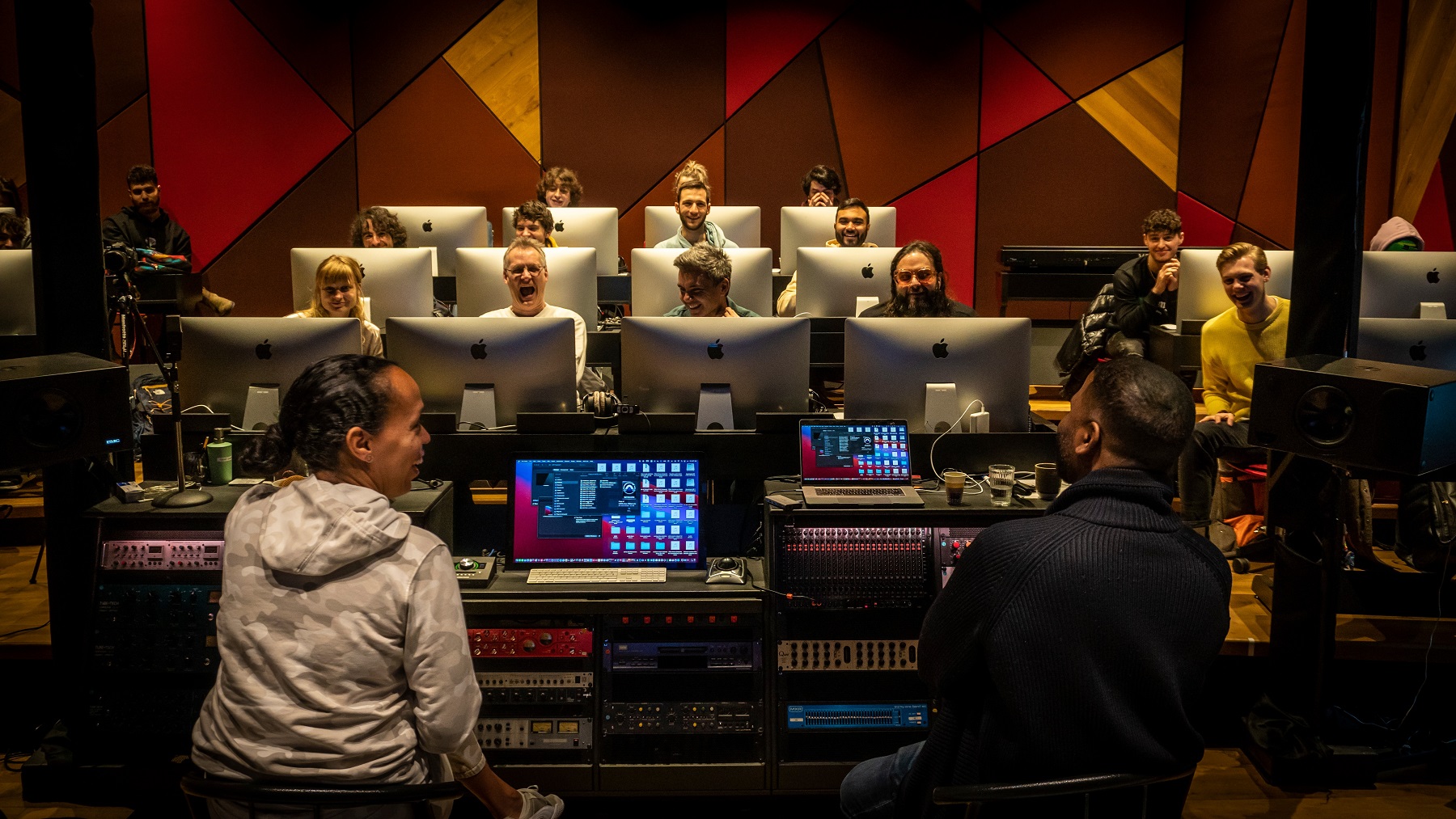
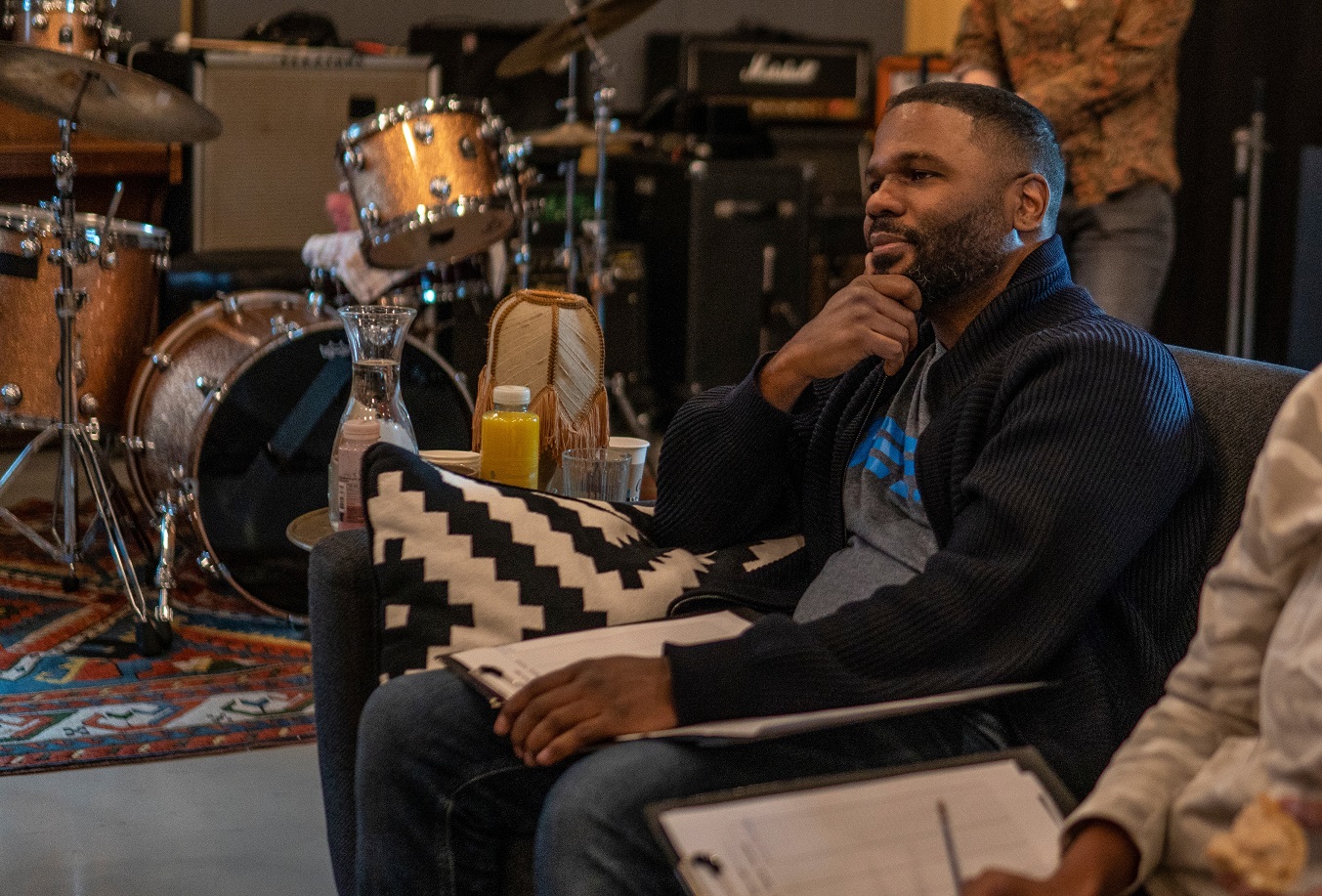
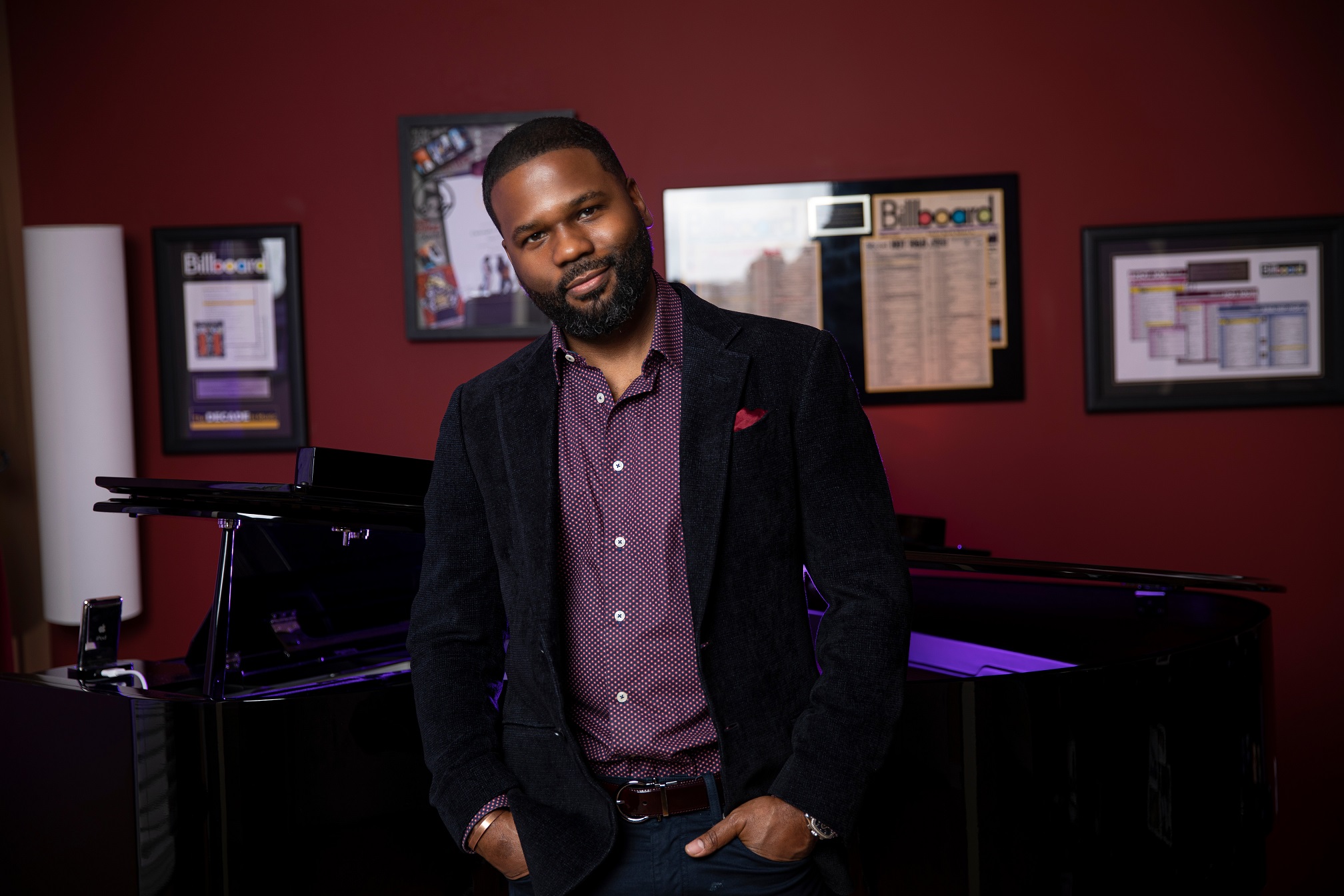
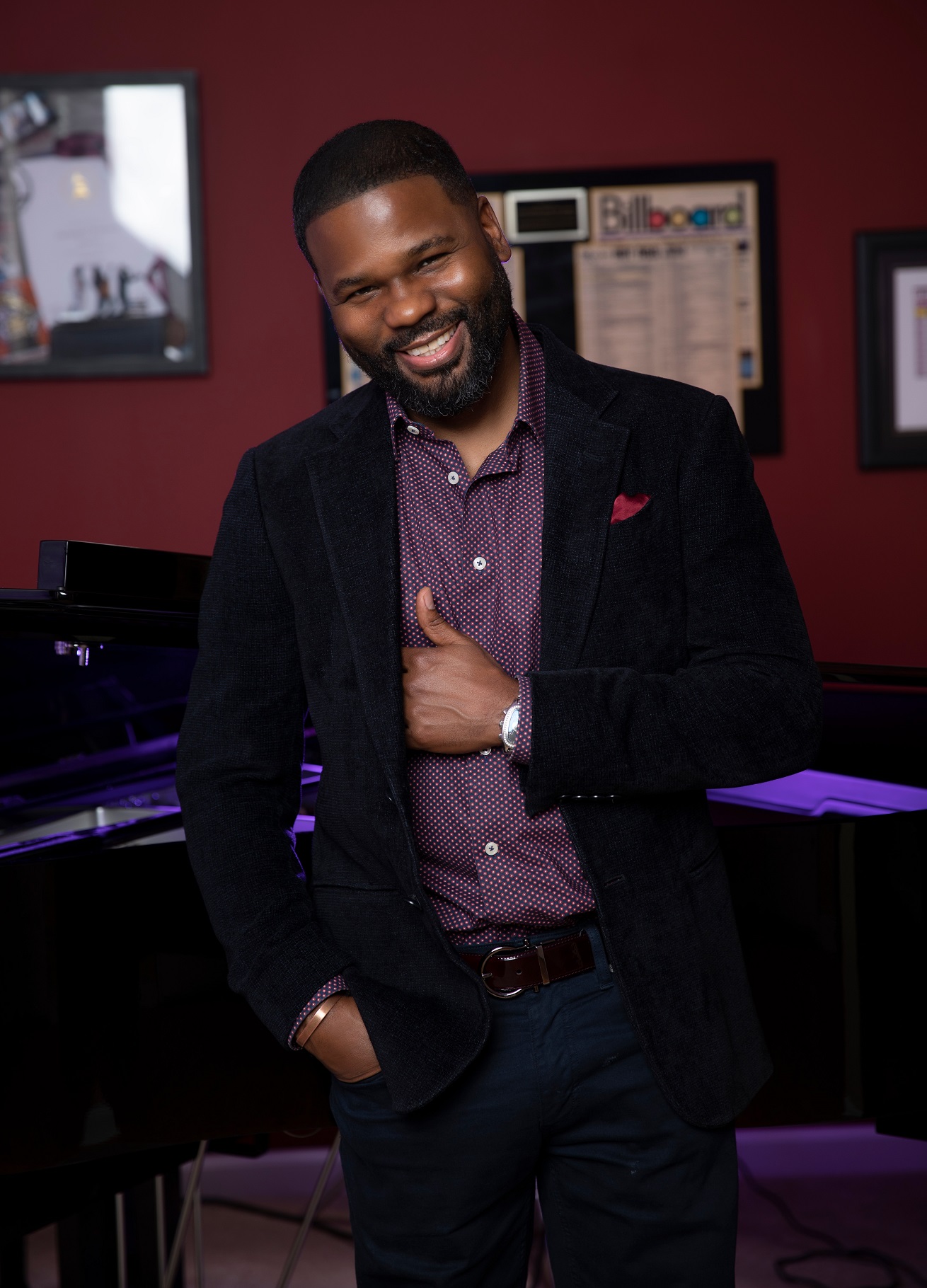
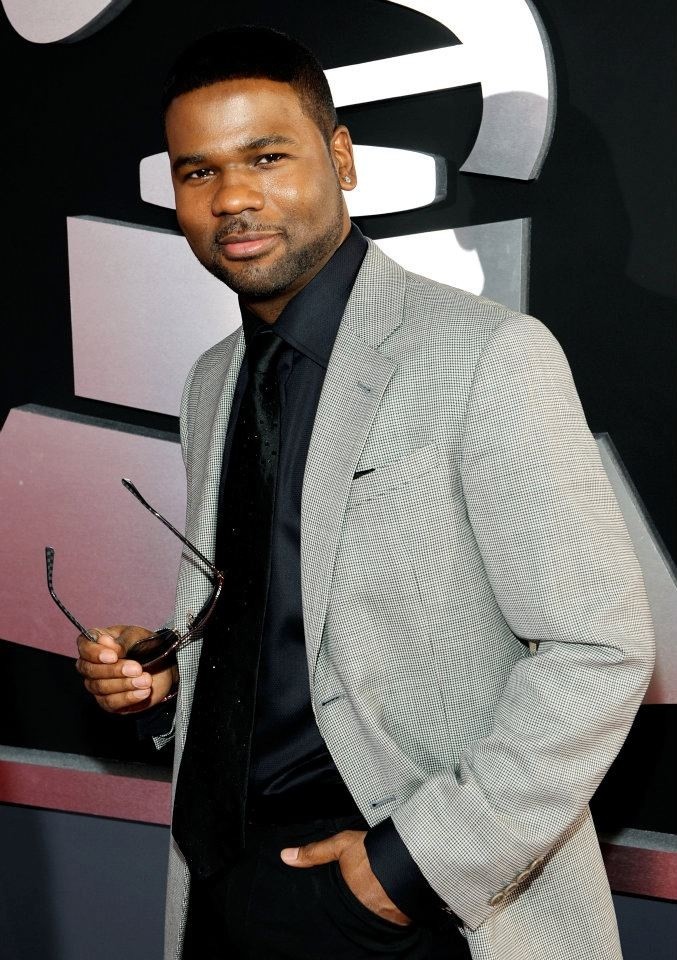
Image Credits:
Main photo I sent, and the first 3 additional photos of me in my basement studio or by my piano in front of the Billboard plaques were taken by Jack L. Manning, Jaxon Photography group. 2. The 2010 Grammy red carpet shot was purchased by me from Getty images, I don’t know remember which photographer took it. 3. Abbey Road Studios, Amsterdam shots were by Dennis Beentjes 4. The shot of me speaking in front of an auditorium crowd in Amsterdam was taken by an unknown/unnamed intern for Greg Struiken

